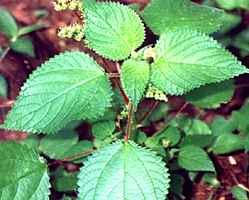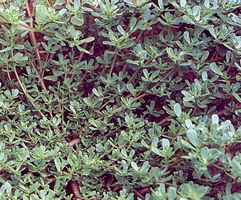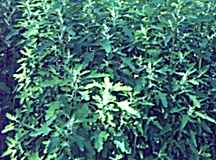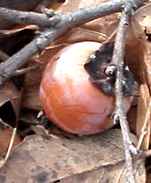5 On the Wild Side
|
Foraging may seem like a thing from our distant past, but there are many nutritious fruits and vegetables growing wild around you. Learning to identify and use them safely can add some adventure to getting your 5 A Day. Here are a few wild favorites.
|

|
Stinging Nettles (Urtica dioica)
 Nettles are a potherb used in Russian Spring Soup and other traditional recipes. They prefer growing in very rich moist soil along riverbanks. Besides their use as a vegetable, nettles have been used as an anti inflammatory for arthritis, a spray to protect plants from fungal attack, a hair rinse, to make cloth, and to curdle cheese. Nettles are a potherb used in Russian Spring Soup and other traditional recipes. They prefer growing in very rich moist soil along riverbanks. Besides their use as a vegetable, nettles have been used as an anti inflammatory for arthritis, a spray to protect plants from fungal attack, a hair rinse, to make cloth, and to curdle cheese.
Purslane (Portulaca oleracea)
 Purslane is a common weed of gardens and fields. Its succulent leaves are usually eaten raw in salads. They have a mucilaginous texture that is sometimes valued for thickening soups. It is very rich in vitamin E, and omega-3 oils that help reduce the risk of heart disease and cancer. Purslane is a common weed of gardens and fields. Its succulent leaves are usually eaten raw in salads. They have a mucilaginous texture that is sometimes valued for thickening soups. It is very rich in vitamin E, and omega-3 oils that help reduce the risk of heart disease and cancer.
Lambsquarters (Chenopodium album)
 A wild relative of spinach, lambsquarters is a very common weed of gardens, fields and waste areas. The young leaves are eaten as a potherb, and are very rich in beta-carotene, lutein, folic acid, vitamin C, and iron. Like spinach, lambsquarters contain oxalic acid and should be avoided by people troubled with calcium oxalate kidney stones. A wild relative of spinach, lambsquarters is a very common weed of gardens, fields and waste areas. The young leaves are eaten as a potherb, and are very rich in beta-carotene, lutein, folic acid, vitamin C, and iron. Like spinach, lambsquarters contain oxalic acid and should be avoided by people troubled with calcium oxalate kidney stones.
Blackberry (Rubes sp.)
 Pick them wild at the edge of fields and forest but beware of their thorns. Blackberries are low in calories and rich in vitamin C and ellagic acid, a key cancer fighting antioxidant. Pick them wild at the edge of fields and forest but beware of their thorns. Blackberries are low in calories and rich in vitamin C and ellagic acid, a key cancer fighting antioxidant.
Persimmon (Diospyros virginiana)
 Persimmons are native to the forests of the eastern United States. The soft fruits fall or can be shaken from trees in the autumn. They can be eaten raw or dried. Fully ripe fruit has a rich smooth flavor, but before it is fully ripe the fruit can have an unpleasant astringent taste. Persimmons are native to the forests of the eastern United States. The soft fruits fall or can be shaken from trees in the autumn. They can be eaten raw or dried. Fully ripe fruit has a rich smooth flavor, but before it is fully ripe the fruit can have an unpleasant astringent taste.
|